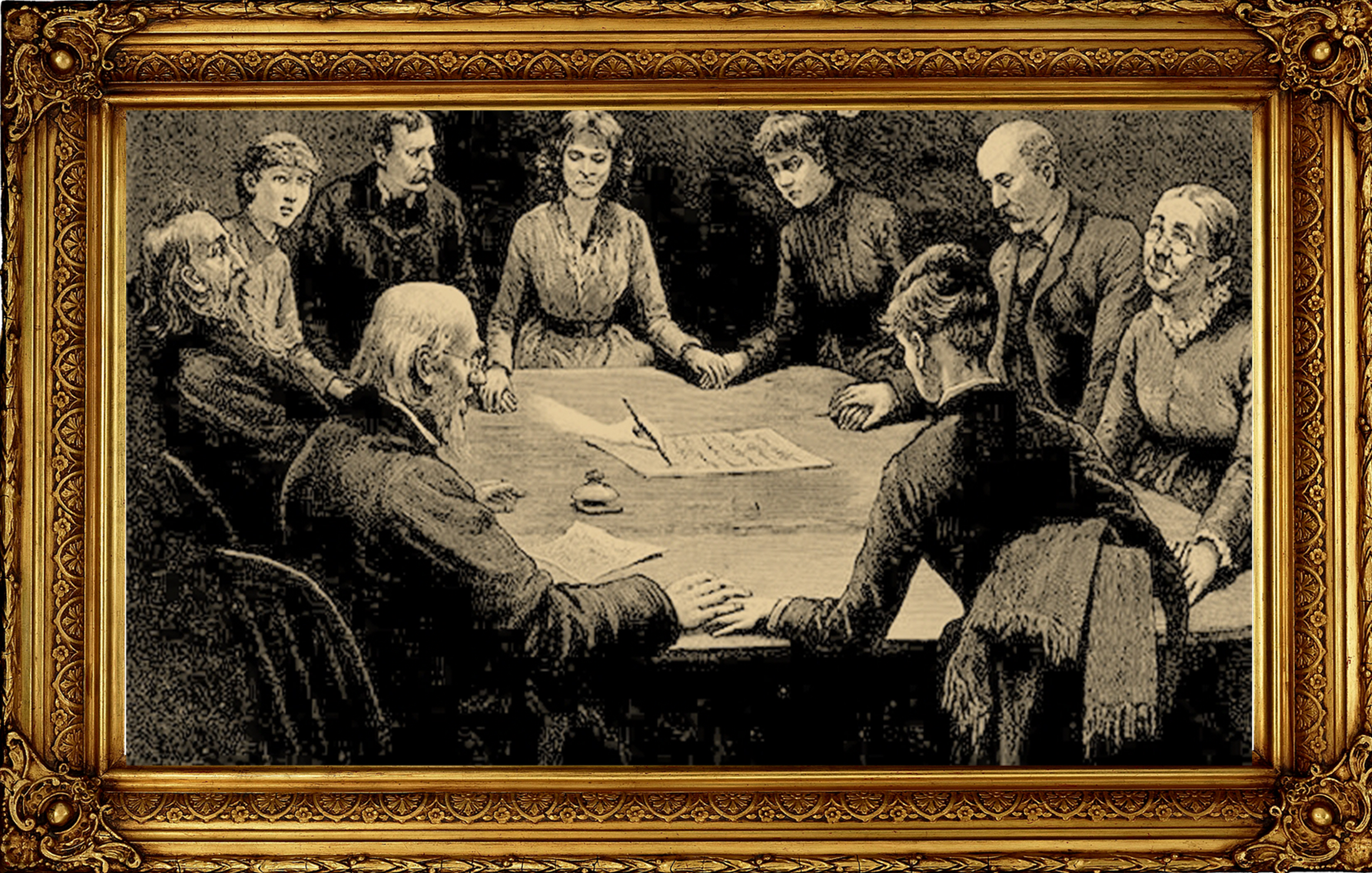 Submitted by Spook on
Submitted by Spook on

Derivative Images "Automatic Spirit Writing"
Across North America and Western Europe, the 19th century was one of seemingly irreconcilable contrasts. Engineering and science were ascendant, but the Victorian era was as much a world of spirits as it was steam trains. For all the promises of a better future, the age was a morbid one – visit a graveyard and the memorials that loom the largest, like props from an old horror film, will most likely date from the mid-to-late 1800s. It’s no coincidence that this was the era of the spooky story too, from Charles Dickens’ A Christmas Carol in Britain to Edgar Allan Poe’s The Masque of the Red Death in the United States.
The Industrial Revolution brought with it an increasing rate of accidents and pollution, infant mortality was high, war and disease were rife – a litany of ills tore families apart, leaving a grief that many con artists were only too happy to profit from. Spiritualism – the belief that ghosts exist and we can communicate with them – came into being as a movement in 1848, via three American sisters: Leah, Margaret and Kate Fox. The trio hit the headlines with a sensational (and totally bogus) ghost story in which they had communicated with the spirit haunting their home using a series of knocks – one for ‘yes’, two for ‘no’. Rumours soon spread that the spirit belonged to a murdered peddler whose body was hidden in the cellar.
The girls were quickly promoted as mediums, making a fortune by holding crowded séances where they would contact the deceased at the audience’s command. With this business model behind them, mediums began to spring up all over the United States and then in Britain, holding intimate gatherings in darkened homes or more outlandish spectacles in music halls and theatres – for a fee.
Some might have been well-intentioned, genuinely convinced they could contact the dead, but most were frauds, using dim gaslight, hidden accomplices, slight of hand and ingenious contraptions to hoodwink the vulnerable.
Sadly, many people were only too willing to believe. With technology advancing at an unbelievable pace, anything seemed possible. If they could send messages between continents via telegraph cables, then why couldn’t they communicate with the afterlife? If perfect recreations of living people could be captured by photographers, why couldn’t they take pictures of the dead too?
Speaking to the dead
Like the Fox sisters who kicked off an interest in spiritualism with their tall tales, cynical con artists produced a wide repertoire of gimmicks, including phantom knocking with their feet, painted balloons masquerading as ghosts, objects ‘floating’ around with the help of fishing lines, violins with weighted bows which appeared to play notes by themselves, or ‘phantom music’ from a hidden gramophone.
Low light, apparently better for ghosts, helped conceal the true nature of the con; total darkness was even better. Mediums encouraged the participants to keep their eyes closed, allowing them to reach out and touch people with ‘ghostly hands’, or even with their shoes to create the illusion of levitation.
These appear like bizarre conjuring tricks now and it seems strange that anyone would have been taken in by something that required your eyes to be closed in order for it to work, but in the 19th century, they gripped society.
https://www.howitworksdaily.com/victorian-seances-debunked-the-secrets-of-speaking-to-the-dead/
- 567 reads